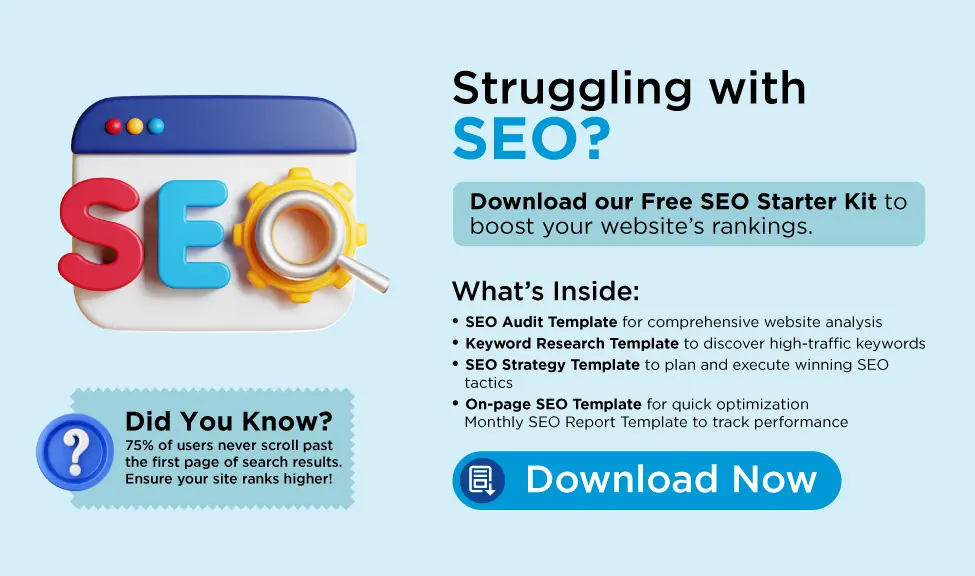10 Steps for Startup Founders to Build a Personal Brand on Social Media
Read MoreIn today's digital landscape, developing a well-structured and user-friendly educational website is crucial for attracting and retaining visitors. A key step in the website development process is creating a wireframe that not only outlines the site's layout but also integrates search engine optimization (SEO) considerations from the very beginning. In this blog, we will explore what a wireframe is, examine examples, and discuss the essential steps and strategies for crafting an SEO-friendly educational website wireframe.
Key Takeaways:-
- A wireframe acts as a visual blueprint for digital interfaces such as apps, software, or websites.
- Essential elements to include in a wireframe are CTA buttons, text snippets, and content blocks.
- Understanding the user journey is crucial before designing the user flow.
- The first step in creating your wireframe is collecting user data through a customer data platform (CDP).
- Enhance your wireframe by integrating an SEO strategy, optimizing content, and selecting the right wireframing tool.
What is a Wireframe?
A wireframe is a visual blueprint that represents the skeletal framework of a website. It is an essential tool for designers and developers, outlining the placement of elements such as headers, footers, navigation menus, content blocks, and interactive features. Unlike a finished design, a wireframe focuses on functionality, layout, and user experience without incorporating colors, graphics, or detailed content. Wireframes help stakeholders visualize the structure and flow of the website, ensuring that the design aligns with the project's goals and meets the needs of the target audience before any resources are invested in full-scale development.

Examples of Wireframes
Wireframes can vary in complexity. Low-fidelity wireframes are basic sketches, often created with simple tools or even pen and paper, offering a rough idea of the layout without much detail. These are useful for initial brainstorming and discussions. Mid-fidelity wireframes add more detail, including placeholder text and images, and focus on accurate spacing and alignment of elements, as well as basic user interactions. High-fidelity wireframes are detailed and precise, closely resembling the final product, and may include exact content, imagery, and even interactive elements. Finally, interactive wireframes allow users to interact with the prototype by clicking through pages, experiencing the flow of the website as it would function in the final design. Tools like Adobe XD, Figma, and Sketch are often used to create these interactive wireframes, which are invaluable for user testing and refining the user experience (UX).
For example, imagine designing an educational website for an online learning platform. A low-fidelity wireframe might outline the homepage with sections for featured courses, testimonials, and a sign-up form, while a high-fidelity wireframe would detail each course's thumbnail, description, and enrollment button, incorporating navigation menus linking to different subject areas. This process provides a clear roadmap for designers and developers to follow, ensuring the website meets both functional and aesthetic goals.
Steps You Must Take Before Creating a Website Wireframe?
Before diving into the wireframing process, it is crucial to lay a solid foundation by understanding your audience, defining objectives, and planning the user journey.
Step 1 – Collect Enough Customer Data
Understanding your target audience is paramount in creating a website that meets their needs and expectations. This involves gathering comprehensive customer data through market research, which includes analyzing industry trends, competitor websites, and market demands to identify what works and what doesn't in your niche. Creating detailed user personas that represent your ideal users, including their demographics, behaviors, goals, and pain points, is also essential. Additionally, conducting surveys and interviews will provide direct insights into your audience's preferences, challenges, and expectations. Reviewing analytics from existing platforms or similar websites can further enhance your understanding of user behavior, popular content, and engagement patterns. By collecting and analyzing this data, you can make informed decisions about your website's structure, content, and functionality, ensuring it resonates with your audience and effectively meets their needs.
Step 2 – Identify Your User Flow
User flow refers to the path a visitor takes to complete a specific task on your website, such as enrolling in a course or accessing educational resources. Defining clear and intuitive user flows is critical for enhancing user experience and achieving your website's objectives. This involves defining the objectives of your website, mapping out each step a user will take from entry to goal completion, and considering different scenarios, including various entry points and paths users might take, such as direct visits, search engine referrals, or social media links. Identifying potential obstacles that could hinder users from completing their goals and optimizing the flow for efficiency by minimizing the number of steps required to achieve the desired action are also important. For an educational website offering online courses, a user flow might start with a visitor landing on the homepage, browsing available courses, selecting a course, viewing detailed information, and finally enrolling by completing a registration and payment process. Ensuring this flow is smooth and intuitive will significantly enhance user satisfaction and conversion rates.
Step 3 – Create the Wireframe
With a clear understanding of your audience and user flows, you can proceed to translate your ideas and plans into a visual format that outlines the structure and layout of your website. This process involves choosing the right tool for wireframing, which suits your needs and proficiency level, and starting with simple sketches to layout the primary structure before refining details. You should define layouts and grids to ensure a cohesive design across different pages and strategically place key elements like headers, footers, navigation menus, content areas, and call-to-action buttons based on user flow and priorities. Emphasizing functionality over visual design and including annotations to explain functionalities, interactions, and intended behaviors is crucial. Reviewing the wireframe with stakeholders, gathering feedback, and making necessary adjustments through continuous iteration is also essential. For instance, in an educational website, simplicity is key—keeping the design uncluttered ensures clarity and ease of use, while prioritizing content and ensuring responsiveness and accessibility create a user-friendly experience that aligns with the website’s goals.
How to Make Your Website Wireframe More SEO-friendly
Integrating SEO considerations into your wireframe from the outset is essential for ensuring your website is structured for better visibility and ranking on search engines.
Choose the Right Tool for Wireframing
Selecting an appropriate wireframing tool is crucial for efficiently incorporating SEO elements into your design process. Consider tools that allow for easy annotation and inclusion of SEO-related details such as meta tags, headings, and URL structures. Additionally, tools with strong collaboration features are beneficial for real-time feedback from SEO specialists and other stakeholders. Prototyping capabilities are also important, as they help visualize user flow and assess the SEO impact of navigation and content placement. Figma, Adobe XD, Sketch, and Balsamiq are recommended tools that offer varying degrees of SEO integration, collaboration features, and prototyping capabilities, depending on your team’s needs and proficiency levels.
Define Your Website’s Navigation and Structure
A well-organized and intuitive website structure is crucial for both user experience and SEO. It helps search engines crawl and index your site effectively while enabling users to find information easily. Structuring your content in a logical hierarchy with clear categories and subcategories facilitates easy navigation and improves crawlability. Consistent navigation menus across all pages enhance user experience and reduce bounce rates. Implementing breadcrumb navigation helps users understand their location within the site’s hierarchy and improves internal linking structure. Planning for an XML sitemap in your wireframe ensures all pages are accounted for and easily discoverable by search engines. Clean and descriptive URL structures that reflect the content hierarchy and include relevant keywords, as well as a well-planned internal linking strategy, distribute link equity and guide users to related content, enhancing both SEO and user engagement.
Optimize Your Content and Page Layouts
Strategically planning content placement and page layouts in your wireframe is essential for both SEO and user engagement. Optimized layouts enhance readability, highlight important information, and improve overall user experience. Using appropriate heading tags (H1, H2, H3, etc.) to structure your content logically makes it easier for search engines to understand and index your content. Planning for relevant keywords in headings, subheadings, and body content, while maintaining readability and a natural flow, is crucial. Prioritizing the placement of the most important content and keywords prominently on the page captures user attention and signals relevance to search engines. Allocating space for multimedia elements such as images and videos, and planning for their optimization through descriptive file names and alt tags, enriches content while supporting SEO. Strategically positioning call-to-action buttons to guide users toward desired actions improves engagement and conversion rates. Ensuring that your layouts are adaptable to various screen sizes and devices is important for mobile-friendliness, a critical SEO factor. Additionally, planning for lightweight design elements and efficient coding practices in your wireframe ensures fast page load times, further enhancing user experience and SEO performance.
Keep Testing and Refining Your Wireframe
Continuous testing and refinement are essential to ensure your wireframe effectively balances user experience and SEO requirements. Conduct usability tests with real users to gather feedback on navigation, content clarity, and overall user experience. Collaborate with SEO specialists to review the wireframe for compliance with best practices and identify areas for improvement. Experiment with different layouts and content structures through A/B testing to determine the most effective configurations for engagement and SEO performance. Ensuring your design meets accessibility standards makes your website usable for all individuals, which also positively impacts SEO. Assessing anticipated load times and performance metrics based on your design elements and structure is also crucial. Feedback from all stakeholders, including designers, developers, content creators, and SEO experts, should be incorporated into the wireframe to refine and enhance the design iteratively. For example, after creating your initial wireframe, conducting usability tests where participants navigate through the prototype to complete specific tasks and gathering feedback on ease of use, clarity of information, and any confusion encountered, can provide valuable insights for refinement. Simultaneously, having SEO experts review the structure and content placement ensures alignment with SEO strategies.
Conclusion
Creating an educational website wireframe that is optimized for SEO requires a strategic and collaborative approach. By thoroughly understanding your audience, defining clear user flows, and meticulously planning your site’s structure and content layout, you lay a strong foundation for a successful and high-performing website. Integrating SEO considerations from the outset ensures that your site is not only user-friendly but also primed for visibility and ranking on search engines. Choosing the right tools, continuously testing and refining your design, and staying updated with SEO best practices are crucial steps in this process.






